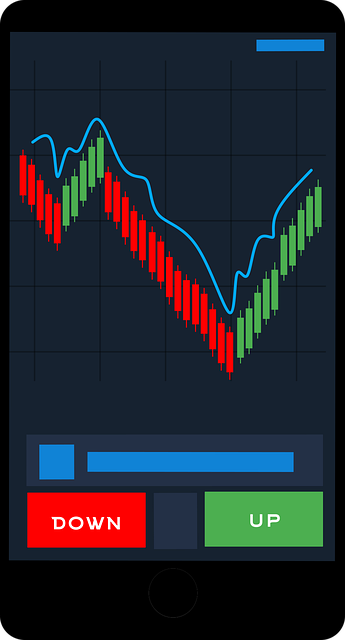
Category: How to Apply for Purchase Order Financing
How to Apply for Purchase Order Financing: A Comprehensive Guide
Introduction
In today’s dynamic business landscape, accessing working capital is a critical aspect of managing cash flow, especially for companies involved in international trade and complex supply chains. One innovative financing method gaining traction is the application for Purchase Order (PO) financing. This article aims to demystify the process, offering an extensive guide on how businesses can leverage PO financing to streamline their operations and unlock growth opportunities. By exploring various facets of this financing mechanism, we will empower readers with the knowledge to navigate the complexities and reap its benefits.
Understanding Purchase Order Financing: Unlocking the Basics
Purchase Order Financing Explained: Purchase Order (PO) financing is a type of short-term working capital loan secured by an outstanding vendor invoice. It enables businesses, particularly those involved in B2B transactions, to access funds before the seller (or vendor) pays the invoice. This financing method is especially valuable for companies that have long payment terms with their suppliers but require immediate cash flow for operational needs.
Core Components:
-
Purchase Order (PO): A legal document issued by a buyer to a seller, outlining the goods or services to be purchased and the agreed-upon terms of payment. It serves as collateral for the financing.
-
Vendor/Supplier: The company that provides goods or services and generates an invoice upon delivery. They hold the right to the funds until the invoice is settled.
-
Financing Institution (Lender): This can be a bank, financial institution, or specialized PO financing platform that provides the loan based on the PO as collateral.
Historical Context: The concept of PO financing has its roots in traditional trade finance practices. However, with advancements in technology and globalization, it has evolved into a more accessible and efficient method for businesses seeking interim funding. Traditional methods often involved lengthy approval processes and complex documentation, but modern digital platforms have streamlined these steps, making PO financing faster and more convenient.
Global Impact and Trends
Purchase Order financing is a global phenomenon, with varying degrees of adoption and unique regional nuances:
-
North America: The United States and Canada have seen significant growth in PO financing due to their robust digital infrastructure and tech-savvy business environment. Many specialized platforms have emerged, offering efficient and customized solutions for businesses across various sectors.
-
Europe: European countries have a well-established banking system, and PO financing is increasingly popular among small and medium-sized enterprises (SMEs) seeking flexible funding options. The rise of digital marketplaces has facilitated cross-border transactions and PO financing opportunities.
-
Asia Pacific: This region, particularly China and Japan, has witnessed rapid industrialization and complex global supply chains. As a result, PO financing is in high demand to support import/export activities and ensure smooth cash flow management.
-
Emerging Markets: Countries like India and Brazil are embracing digital transformation, leading to the growth of online B2B marketplaces and PO financing platforms. This trend democratizes access to finance for smaller businesses operating within these markets.
Economic Considerations: Market Dynamics and Investment Patterns
The economic landscape plays a significant role in shaping the demand and utilization of Purchase Order financing:
| Economic Factor | Impact on PO Financing |
|---|---|
| Interest Rates | Lower interest rates often encourage businesses to take on debt, including PO financing, to fund growth initiatives. Conversely, higher rates may deter borrowing. |
| Inflation | Rising inflation can impact the cost of doing business and may influence companies’ funding strategies, potentially favoring shorter-term financing like PO loans. |
| Economic Growth | Strong economic conditions lead to increased trade and investment, creating a favorable environment for PO financing as businesses expand their operations. |
| Supply Chain Disruptions | Global events like the COVID-19 pandemic can disrupt supply chains, pushing companies towards flexible financing options like POs to maintain cash flow during volatile periods. |
Technological Advancements: Digital Transformation of PO Financing
Technology has been a game-changer in Purchase Order financing:
-
Digital Platforms: The rise of online marketplaces and specialized PO financing platforms has revolutionized the application process. These digital solutions offer real-time data, automated underwriting, and faster approval times compared to traditional methods.
-
Blockchain and Smart Contracts: Blockchain technology ensures secure and transparent transactions, while smart contracts can automate certain processes, reducing manual effort and potential errors. This technology is still evolving but holds promise for the future of PO financing.
-
Artificial Intelligence (AI): AI algorithms enhance risk assessment by analyzing vast amounts of data to predict borrower behavior and default risks. It also enables personalized customer interactions through chatbots and virtual assistants.
-
Data Analytics: Advanced analytics help lenders understand market trends, identify high-value PO opportunities, and offer tailored financing solutions. This enables businesses to make informed decisions regarding their cash flow management strategies.
Policy and Regulation: Navigating Legal Waters
The regulatory environment significantly influences the accessibility and terms of Purchase Order financing:
-
Contractual Agreements: Lenders and borrowers must adhere to mutually agreed-upon terms, including interest rates, repayment schedules, and collateral policies. These contracts are legally binding and govern the relationship.
-
Anti-Money Laundering (AML) and Know Your Customer (KYC) Compliance: Financial institutions must comply with AML and KYC regulations to prevent fraudulent activities and ensure responsible lending practices. This often involves thorough due diligence on borrowers.
-
Data Privacy Laws: With the increasing use of digital platforms, data privacy becomes a critical concern. Lenders must handle customer data securely and in accordance with relevant laws, such as GDPR in Europe.
-
Government Incentives: Some governments offer incentives or subsidies to encourage the adoption of innovative financing methods like PO financing, especially for SMEs. These incentives can make funding more accessible.
Challenges and Criticisms: Overcoming Barriers
Despite its benefits, Purchase Order financing faces certain challenges and criticisms:
-
Collateral Dependency: Lenders rely heavily on the PO as collateral, which may limit borrowers’ negotiating power regarding loan terms. This dependency is a concern for businesses with unpredictable sales cycles or those relying on long-term contracts.
-
Interest Rates: PO financing often carries higher interest rates compared to traditional loans due to the increased risk for lenders. Borrowers should carefully consider their ability to manage these costs.
-
Complex Underwriting: Assessing the creditworthiness of businesses based on POs can be challenging, especially for new or seasonal businesses. Lenders may require additional financial data to mitigate risks.
Strategic Solutions: To address these challenges, lenders can:
- Develop flexible financing products with customizable terms to cater to diverse business needs.
- Offer competitive interest rates by leveraging digital platforms for efficient risk assessment and cost reduction.
- Provide educational resources to businesses on improving their financial health, enabling them to access better loan terms.
Case Studies: Real-World Success Stories
Case Study 1: Global Manufacturing Giant
A multinational manufacturing company was facing cash flow challenges due to delayed payments from clients across different countries. They leveraged PO financing by partnering with a specialized platform, securing funding based on their existing vendor POs. This enabled them to maintain operations, meet supplier obligations, and ensure uninterrupted production during a critical market expansion phase.
Key Takeaways:
- PO financing provided much-needed working capital during peak demand.
- Digital platforms facilitated cross-border transactions and streamlined the financing process.
- The company’s strong vendor relationships and established POs were crucial to accessing funding.
Case Study 2: Tech Startup Accelerates Growth
A tech startup, developing an innovative e-commerce platform, required rapid funding to expand its development team and market reach. They approached a PO financing provider, which assessed their potential based on future sales projections and existing vendor POs. The process was swift, allowing the startup to secure funds within days, enabling them to accelerate growth and capture market share.
Lessons Learned:
- PO financing is suitable for startups with high growth potential but limited historical data.
- Lenders can utilize advanced analytics to assess future cash flows and make informed decisions.
- Quick approval times and accessible funding enabled the startup to seize market opportunities.
Future Prospects: Emerging Trends and Growth Areas
The Purchase Order financing landscape is poised for further growth and evolution:
-
Sustainable Finance: There is a growing emphasis on sustainable and responsible lending practices, with lenders considering environmental, social, and governance (ESG) factors when assessing borrowers. This trend aligns with global sustainability goals.
-
Open Banking and Data Sharing: The adoption of open banking standards enables secure data sharing between financial institutions, potentially leading to more personalized PO financing offers and improved access for businesses.
-
AI-driven Personalization: Lenders can leverage AI to offer tailored financing solutions based on individual business needs, market trends, and historical performance. This level of customization enhances customer satisfaction.
-
Global Expansion and Digital Integration: With the increasing digital integration of global supply chains, PO financing is expected to play a more significant role in facilitating cross-border transactions and supporting multinational corporations’ cash flow management.
Conclusion: Empowering Businesses through PO Financing
Purchase Order financing has emerged as a powerful tool for businesses seeking flexible and accessible working capital. By understanding its core concepts, global impact, economic considerations, technological advancements, and regulatory framework, companies can make informed decisions regarding their financial strategies. Overcoming challenges and learning from successful case studies will further strengthen the adoption of PO financing.
As the business landscape continues to evolve, so too will the methods through which businesses secure funding. Purchase Order financing is poised to remain a vital component of global trade and supply chain finance, empowering companies to navigate cash flow hurdles and seize growth opportunities.
FAQ Section: Answering Common Queries
Q: What is the eligibility criteria for PO financing?
A: Lenders typically assess a company’s financial health, creditworthiness, and the strength of its vendor relationships. While traditional requirements include a solid credit history and stable cash flows, digital platforms may offer more flexible eligibility criteria based on advanced data analytics.
Q: How quickly can I access funds through PO financing?
A: The time frame varies, but with modern digital platforms, the application process can be completed in days, and funding is often released promptly after approval, providing much-needed liquidity for businesses.
Q: Are there any risks associated with PO financing?
A: Like any loan, there are risks involved. Borrowers must ensure they have a stable cash flow to repay the loan and maintain good relationships with suppliers to avoid disruptions in their supply chain. Lenders assess these factors to mitigate risks.
Q: Can small businesses or startups apply for PO financing?
A: Absolutely! Many specialized platforms cater to SMEs and startups, understanding their unique funding needs. Advanced analytics and alternative data sources enable lenders to assess the potential of young businesses based on future projections and market trends.
Q: How does PO financing differ from traditional business loans?
A: Traditional loans often require collateral, extensive documentation, and a lengthy approval process. In contrast, PO financing utilizes existing vendor POs as collateral, streamlining the application process and making it faster and more accessible for businesses with strong supplier relationships.









